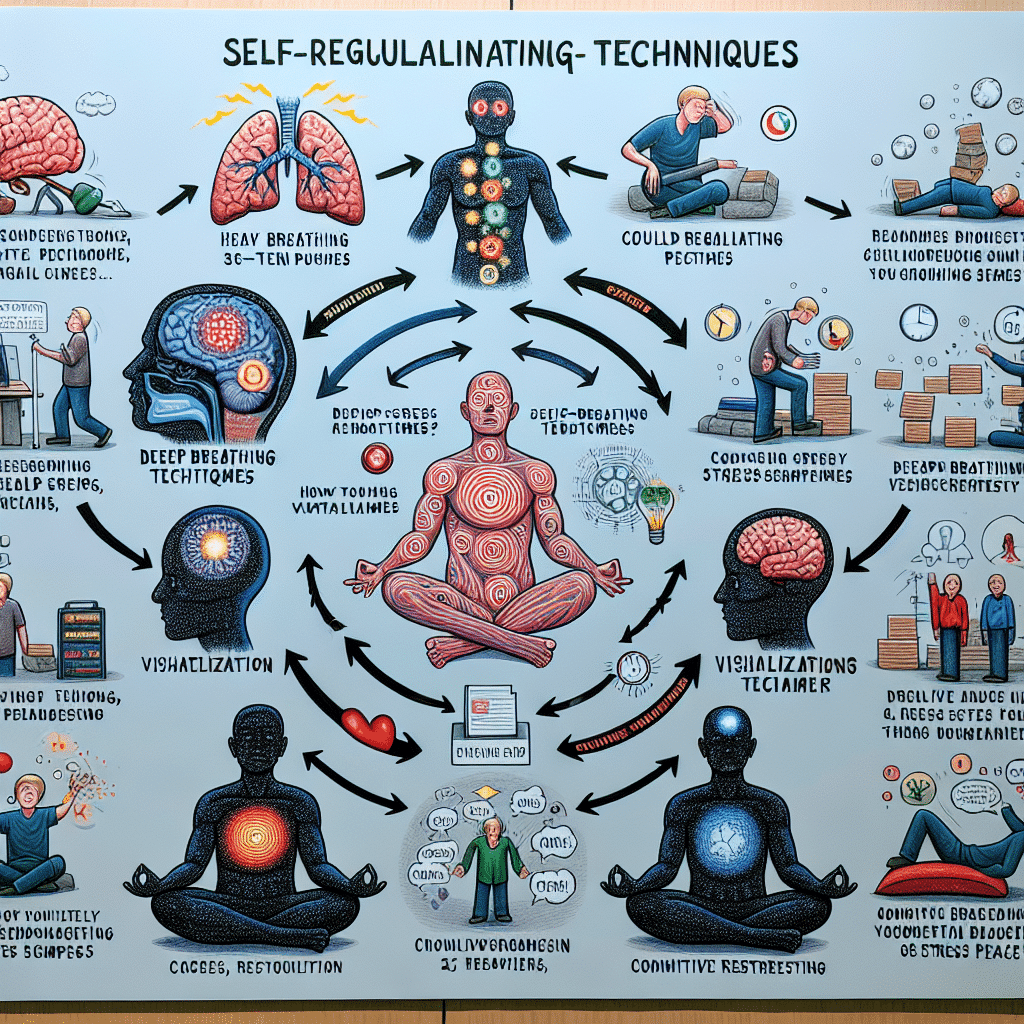Understanding Stress Management
Stress is a common part of life that can have both physical and mental impacts on individuals. Managing stress is essential to maintain overall well-being and prevent negative consequences on health and daily functioning. One effective approach to stress management is through the use of self-regulatory techniques, which help individuals regulate their emotions, thoughts, and behaviors in response to stressors.

Identifying Personal Triggers
Stress management begins with identifying personal triggers that can cause feelings of stress and anxiety. By recognizing these triggers, individuals can better understand their responses and work towards managing their stress effectively. Here are some key steps to help identify personal triggers:
- Recognizing stressors: Take note of situations, events, or interactions that tend to cause stress. These could be work-related deadlines, family conflicts, or even certain social environments.
- Understanding individual reactions to stress: Pay attention to how you typically respond to stress. Do you experience physical symptoms like headaches or muscle tension? Do you tend to feel irritable or overwhelmed?
- Identifying patterns and behaviors: Look for patterns in your stress triggers and reactions. Are there common themes or situations that consistently lead to stress? Do you engage in certain behaviors when feeling stressed, such as overeating or withdrawing from others?
By taking the time to identify personal triggers, individuals can gain insight into their stress responses and begin to develop strategies for managing stress effectively. This self-awareness is an important first step towards creating a personalized stress management plan that addresses specific needs and challenges.
Implementing Self-Regulatory Techniques
When it comes to managing stress, self-regulatory techniques can be highly effective in helping individuals cope with and reduce the impact of stressors on their mental and physical well-being. These techniques empower individuals to take control of their stress levels and create a sense of calm and balance in their lives.
Deep Breathing Exercises
One of the simplest yet most powerful self-regulatory techniques for managing stress is deep breathing exercises. By focusing on slow, deep breaths, individuals can activate the body’s relaxation response, which helps reduce feelings of anxiety and tension. Deep breathing exercises can be practiced anywhere, anytime, making them a convenient tool for immediate stress relief.
Mindfulness and Meditation Practices
Mindfulness and meditation practices involve staying present in the moment, acknowledging thoughts and emotions without judgment, and cultivating a sense of inner peace and awareness. These practices have been shown to reduce stress, improve mood, and enhance overall well-being. By incorporating mindfulness and meditation into daily routines, individuals can develop a greater sense of clarity and resilience in the face of stressors.
Physical Exercise and Relaxation Techniques
Physical exercise is not only beneficial for the body but also for the mind. Engaging in regular physical activity can help reduce stress levels, improve mood, and boost energy levels. Whether it’s going for a run, practicing yoga, or taking a leisurely walk, finding a physical activity that suits individual preferences can be a powerful tool for stress management. Additionally, relaxation techniques such as progressive muscle relaxation, visualization, or aromatherapy can help individuals unwind and combat stress effectively.

Developing a Stress Management Plan
Creating a personalized stress management plan is essential for effectively managing stress and promoting overall well-being. By developing a plan that is tailored to your individual needs and circumstances, you can better address the specific triggers and challenges that contribute to your stress levels. Here are some key steps to help you create a comprehensive stress management plan:
Setting Achievable Goals
When creating your stress management plan, it’s important to set achievable goals that are realistic and measurable. Identify specific areas of your life that are causing stress and set clear objectives for how you will address them. Whether it’s improving time management skills, implementing relaxation techniques, or seeking support from a therapist or counselor, setting achievable goals can help you track your progress and stay motivated.
Implementing Self-Regulatory Techniques in Daily Life
Integrating self-regulatory techniques into your daily routine is key to effectively managing stress. Whether it’s practicing deep breathing exercises, engaging in mindfulness and meditation practices, or incorporating physical exercise and relaxation techniques, finding strategies that work for you and integrating them into your daily life can help you better cope with stress and promote a sense of balance and well-being.
Seeking Support and Guidance
Creating a stress management plan can be a challenging process, and it’s important to seek support and guidance along the way. Whether it’s talking to a trusted friend or family member, seeking guidance from a mental health professional, or joining a support group, reaching out for help can provide you with the tools and resources you need to effectively manage stress and improve your overall quality of life.
Monitoring Progress and Adjusting Strategies
As you embark on your stress management journey utilizing self-regulatory techniques, it is crucial to regularly monitor your progress and make adjustments to your strategies as needed. By tracking your stress levels and assessing the effectiveness of the techniques you are employing, you can ensure that you are on the right path towards achieving balance and well-being.
Tracking Stress Levels
One of the first steps in monitoring your progress is to track your stress levels on a consistent basis. This can be done through journaling, noting how you feel throughout the day, or using apps designed to help you monitor stress levels. By keeping track of your stress levels, you can identify patterns, triggers, and areas where you may need to focus more on implementing self-regulatory techniques.
Assessing Effectiveness of Techniques
After implementing self-regulatory techniques such as deep breathing exercises, mindfulness practices, or physical exercise, it is essential to assess their effectiveness in helping you manage stress. Take note of how these techniques make you feel, if they help you calm down, and if they provide you with a sense of relief. You may find that some techniques work better for you than others, so it is important to take note of what resonates with you the most.
Making Adjustments as Needed
Based on your observations and assessments, be proactive in making adjustments to your stress management strategies. If you find that a particular technique is not as effective as you had hoped, don’t be afraid to try something new. Experiment with different self-regulatory techniques and find what works best for you. Remember, stress management is a personalized journey, and it may take time to find the strategies that suit you the most.
By monitoring your progress, assessing the effectiveness of the techniques you are using, and making adjustments as needed, you can stay on track towards achieving a sense of balance and well-being in your life. Remember to be patient with yourself and to prioritize self-care as you navigate the ups and downs of managing stress.

Summary
Self-regulatory techniques are essential in stress management as they empower individuals to take control of their stress levels and maintain a sense of balance. By identifying personal triggers and implementing strategies such as deep breathing exercises, mindfulness, and physical exercise, individuals can effectively manage their stress. Developing a personalized stress management plan and consistently monitoring progress allows individuals to make necessary adjustments and continue to prioritize their well-being. Overall, self-regulatory techniques play a crucial role in promoting mental and physical health in the face of stress.






